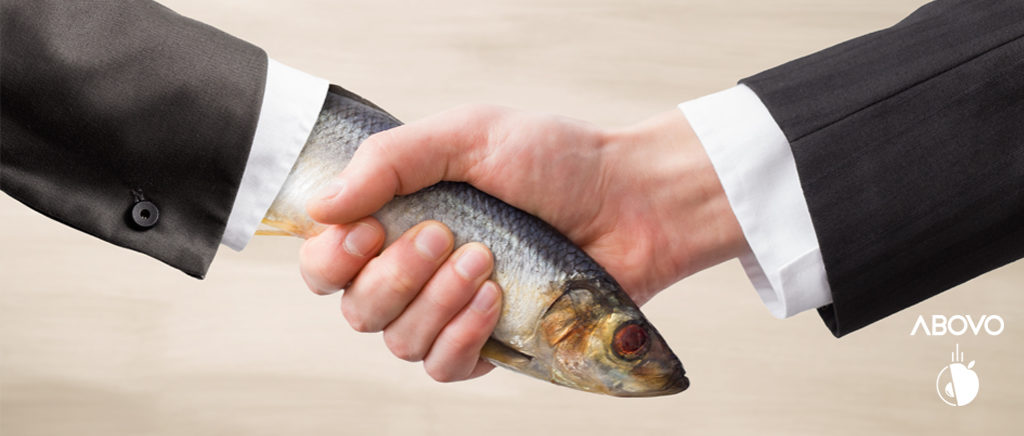OUR TOP 5 KEYS: FIRST IMPRESSIONS
“First impressions are everything.” You have heard this expression and for good reason, because often times, that is the case. According to the Association for Psychological Science, it can take less than a second for somebody to generate an opinion about you. From the clothes you are wearing to your posture, the human mind immediately jumps to forming that oh-so-important first impression. For better or worse, that opinion is often hard to change. We’ve dug into the research available on the topic, and put together our top five keys to make the first encounter a helper rather than a hinder.
- DO YOUR RESEARCH.
Our first key to making a great initial impression requires being done before you even meet whoever it is you are meeting. Whether it is a job interview, a meeting with a potential client or you are finally meeting your significant other’s parents for the first time, taking a few minutes to learn about them can go a long way. In today’s digital world, a quick Facebook search will (hopefully) give you enough information to get an idea of who you will be meeting. Mark Rowh of the American Psychological Association explains how “thinking of a few informed questions you can ask to open up conversation or cover a lull” can help the first encounter go as smooth as possible. A little background digging is an easy way to come up with those informed questions.

- THE HANDSHAKE.
Having a quality handshake may seem like the most basic tip one could give, and it really is. However, we have likely all shook someone’s hand and experienced a feeling similar to holding a wet dish cloth, or the feeling of your hand in vice with no signs of releasing its grip. As Business Insider puts it, “The handshake is accepted internationally as a professional sign of politeness, and a proper handshake can convey confidence.” Finding that happy medium between the two ends of the spectrum can have a surprisingly large impact on the first impression you leave.

- CALL THEM BY NAME.
People love to hear their name. As American writer Dale Carnegie put it, “A person’s name to him or her is the sweetest and most important sound in any language.” Destiny’s Child put it in simplified terms with their 1999 release Say My Name. As simple an idea this is, many struggle with retaining a name when meeting somebody for the first time. While the ability to do so is a valuable asset for future encounters, it can also make the first impression you give a strong one. For example, say you are meeting Sarah, the marketing director of a firm you would like to potentially partner with. When she extends her hand and says “Hi, I’m Sarah,” responding with “Great to meet you, Sarah. I’m _____.” will likely strike a different chord in her mind than a simple, “Hey, I’m _____.” As the conversation moves along, using their name in logical places will not only help better their impression of you, but will also make it easier to remember their name in the future. Perhaps the most important time to call them by name is at the conclusion of your meeting. “It was great to meet you, Sarah” will always be received with more respect than parting words that lack their name. If you think you could use some help with this game of name recall, The Washington Post has a great guide to remembering names quickly and accurately.

- YOU ARE INTERESTING WHEN YOU ARE INTERESTED.
We have all had encounters in which the other person is solely interested in talking about themselves. Those people generally leave a less-than-ideal first impression with the person on the other end of the conversation. Even if you are the Dos Equis Man, putting yourself aside and taking a genuine interest in who you are speaking with is flattering and creates feelings of respect and value. The most important thing to note about this particular concept: It is easy to improve upon. By simply asking questions about who they are, what they do, their family, hobbies and passions you can show you are interested in learning who they are on a personal level. Another key and important note: The interest you are showing must be genuine. Listening closely, making eye contact as they speak and following up with informed comments or questions will make it clear you want to learn more about them. Chances are he or she will reciprocate the interest and you will have ample opportunity to talk about yourself, but in a way that will leave both parties feeling uplifted, organic and genuine.

- BE CONSCIOUS OF YOUR NONVERBALS
It’s often said what you are saying is not as important as how you are saying it. In other words, nonverbal communication can be just as (if not more) important than words coming out of your mouth. Communication studies often discuss the “7% Rule” developed by Dr. Albert Mehrabain who claimed only 7% of communication is verbal and the other 93% is made up of nonverbal cues. While many modern day experts disagree with this claim by arguing an exact percentage cannot be assigned to this topic, there is a general consensus on the main point here: Nonverbal communication makes up a larger part of a conversation than verbal communication. With this in mind, simply being aware of nonverbal cues you are sending – from the tone of your voice, to the way you are standing and everything in between – can be enough to improve your nonverbal communication. Of all the nonverbal cues you can control, giving a genuine smile is perhaps the most important. According to a study conducted by the American Academy of Cosmetic Dentistry, 48% of Americans say an attractive smile is the most memorable feature when meeting somebody for the first time. Another reason to smile is because of the human psychological behavior known as limbic synchrony, or mirroring. Mirroring, as the name suggests, is the phenomena in which people subconsciously mimic the body language, facial expressions and other nonverbals of the person they are talking to. When you give a friendly smile, chances are you will receive one in return. As Jeremy Goldman of Business Insider puts it, “Not only does smiling make others feel more comfortable around you, but it also decreases stress hormones that can negatively impact your health.” Since a smile can do all of this for you – as well as whoever you are talking to – it is a simple and effective way to improve upon your first impression.
You only get one chance to make a first impression. The ability to make it count is only going help in not just your professional life, but also in your personal life. Be confident yet conscious, interesting because you are interested, remember their name and give ‘em a smile.

SOURCES
How many seconds to a first impression? Retrieved from:
https://www.psychologicalscience.org/observer/how-many-seconds-to-a-first-impression
First impressions count. Retrieved from:
http://www.apa.org/gradpsych/2012/11/first-impressions.aspx
Five ways to make a killer first impression. Retrieved from:
https://www.forbes.com/sites/yec/2011/11/02/5-ways-to-make-a-killer-first-impression/#6ce2de7792ab
Six ways successful people make a great first impression. Retrieved from:
http://www.businessinsider.com/6-ways-successful-people-make-a-great-first-impression-2016-9
Career coach: The power of using a name. Retrieved from:
How much of communication is really nonverbal? Retrieved from:
http://www.nonverbalgroup.com/2011/08/how-much-of-communication-is-really-nonverbal
The art and science of Mirroring. Retrieved from:
New survey shows smiling is best way to make first impression. Retrieved from:
http://www.adweek.com/digital/new-survey-shows-smiling-is-the-best-way-to-make-a-first-impression/






